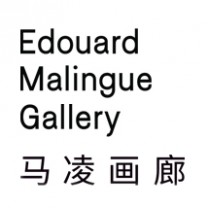- 资质:
- 评分:
1分 2分 3分 4分 5分 6分 7分 8分 9分 10分 2.5分
- 印象:
- 经营时间:15年
- 展厅面积:4000平米
- 地 区:香港
访谈马凌画廊新空间
2015-01-23 12:41:27 来源:Artinfo杂志
HONG KONG — The current talk of the town is Edouard Malingue’s impending move to a new, expanded space in Central occupying the entire sixth floor of 33 Des Voeux Road that is slated to open on January 15, 2015.
The dapper gallerist kindly shared his thoughts on the recent development of Hong Kong’s art ecosystem, the specific conditions of the city’s urban environment, and the gallery’s commitment to extramural projects that unfold outside the confines of the white cube.
- See more at: http://hk.blouinartinfo.com/news/story/1071259/interview-edouard-malingue-on-his-new-space#sthash.m6JDXvzJ.dpuf
You first established your gallery in Hong Kong in 2010. What were your impressions of the city’s contemporary art scene at the time, and how have those impressions changed since?
At the time there were a couple of international galleries, but hardly as many as there are now. The market seemed to be growing in China and in Asia, and Hong Kong appeared to be a good place to establish a gallery in order to be at the center of these developments. Flash forward four years later, and the scene has developed on a local and international level. Of course the auctions are strong, but beyond that, homegrown not-for-profits such as Para/Site, Asia Art Archive, and Spring Workshop are moving and expanding, whilst developments such Art Basel Hong Kong and a higher number of international galleries have put the scene in Hong Kong on the global stage. China remains an important and developing market, but we’ve also seen others that are of interest, such as Taiwan, Korea, Japan, and Indonesia.
What do you think of the entry of high profile Western galleries — such as White Cube, Galerie Perrotin, Lehmann Maupin and Pace — into the Hong Kong art ecosystem in recent years? How has their presence affected (or not affected) local art production and consumption?
As these galleries are not primarily based out of Hong Kong, their spaces here are secondary to the main galleries in Europe or the U.S. As such, they bring artists from their roster to Hong Kong, which is exciting for the public because for many it is a chance to see works by these artists for the first time. As these artists are well known to the art world, it also creates a buzz around contemporary visual art, which helps to create a community and interest around contemporary art at large.
Could you share a bit more about the profile of your collectors? How has the proportion of your collectors from Hong Kong/Greater China/the US/Europe shifted since you established a presence in Hong Kong?
Our collectors are from all over the world. We have European and American collectors, as well as Hong Kong, Chinese, Taiwanese, Korean, Singaporean, and Indonesian collectors. Evidently, since establishing ourselves in Hong Kong, we have been meeting more Asian collectors than if the gallery had opened elsewhere in the West, but our location has not stopped us from developing relationships with new collectors in the West. Many are interested in art from this region, and the gallery participates in art fairs regularly around the world.
Your roster includes Hong Kong-based artists Ko Sin Tung and Joao Vasco Paiva, both of whose work engages intimately with the specific conditions of Hong Kong’s urban environment. What do you find particularly compelling about their practices?
Both artists respond in very distinct ways to Hong Kong’s urban environment. Ko Sin Tung is from Hong Kong — she grew up here, and we first worked with her as part of our off-site exhibition “Never odd or eveN” curated by Esther Lu at the Taipei Artist Village. We were struck by her interest in human behavior and living habits, expressed by focusing on objects that are inherently ordinary yet special to the owner, or how Hong Kong apartments are built with little access to physical light.
Joao Vasco Paiva, on the other hand, moved to Hong Kong eight years ago and has remained here ever since. He approaches his surroundings as an ongoing investigation, conveying the aesthetics of certain elements that one would not otherwise have noticed, fleshing out the rhythms and properties of the unnoticed or bypassed. It prompts you, as a viewer of his art, as well as a citizen, to look around at things a little bit differently.
Some of your recent projects have extended outside the gallery, and into the urban space of Hong Kong — Jeremy Everett’s “No Exit” earlier this year, for example, created a piece on Bridges Street in Sheung Wan, and also staged a performance above Central Pier 4 that involved releasing a cloud of orange pigment into the air. Do you plan to continue organizing less conventional projects such as this one?
Absolutely. Since our inception in 2010, we have been doing projects that extend beyond the gallery walls. In 2011 we installed Zhang Huan’s sculpture “Three Heads Six Arms” in 1881 Heritage, Tsim Sha Tsui, then in 2012 Laurent Grasso’s “Anechoic Pavilion” atop Central Pier 4, and in 2013 Fabien Merelle’s “Pentateuque” in Statue Square Gardens. This last year we also did our first off-site exhibition in Taipei, as mentioned above, in collaboration with the Ministry of Culture, Taiwan and the Taipei Artists Village. We plan to do more of these pop-up exhibitions, as well as continue our public projects.
What are the highlights of your calendar in 2015?
Of course the opening of our new gallery space in January 2015 is the major event. We’ll be opening with a group exhibition entitled “Invisible Light” by five artists who investigate the idea of light through different media — Ko Sin Tung, Nuri Kuzucan, Joao Vasco Paiva, Eric Baudart, and Jeremy Everett. Then in March, we’ll be doing a major solo show with a Chinese artist – it’s an installation and will take over the entire gallery space. Other highlights include a special project with a London-based curator and several solo exhibitions. Indeed, we have a very busy and exciting year ahead.
- See more at: http://hk.blouinartinfo.com/news/story/1071259/interview-edouard-malingue-on-his-new-space#sthash.m6JDXvzJ.dpuf
上一篇:杰里米艾弗雷特与他的“埋藏画作”
下一篇:国际画廊:香港美术馆的替代空间?

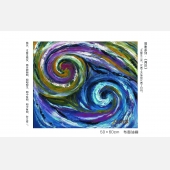 庞明璇
庞明璇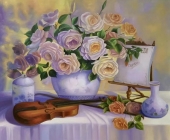 未知
未知 张大千
张大千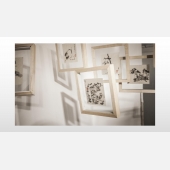 范学宜
范学宜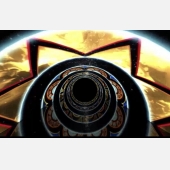 钟飚
钟飚